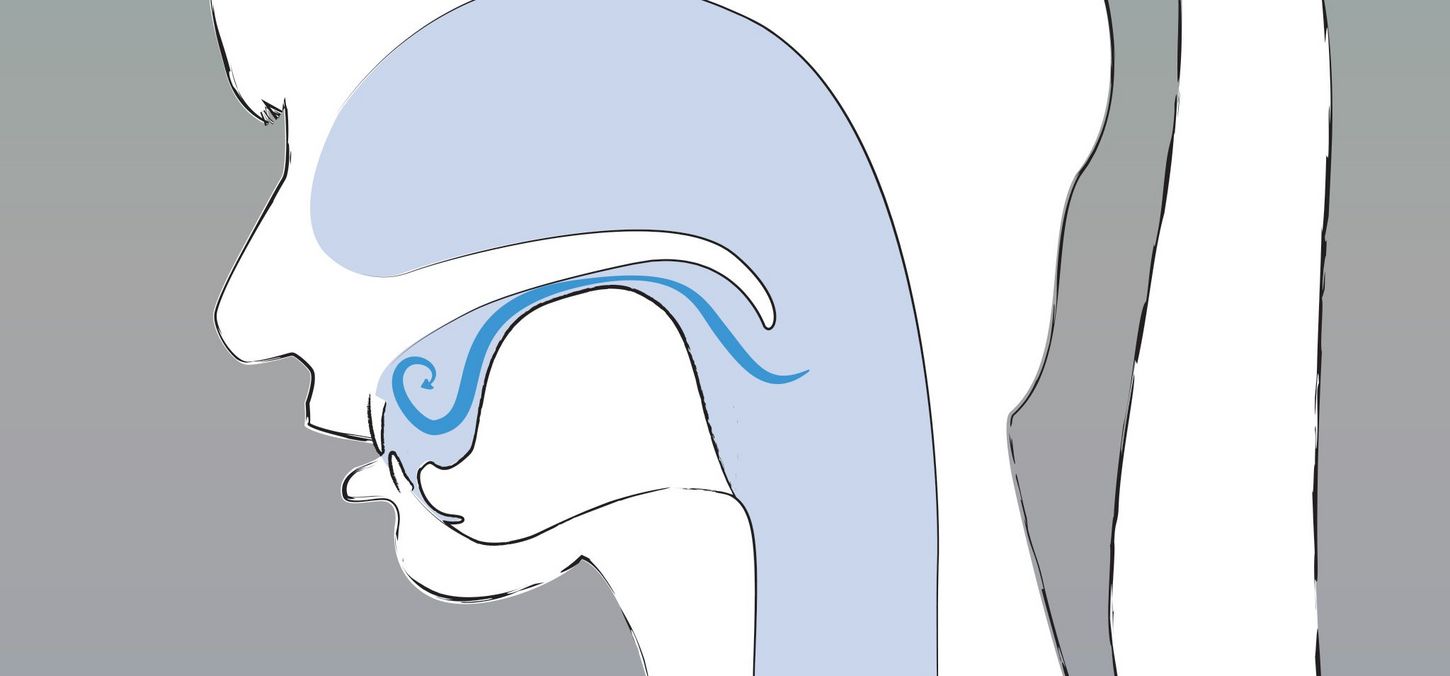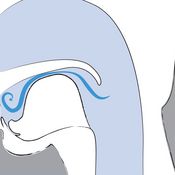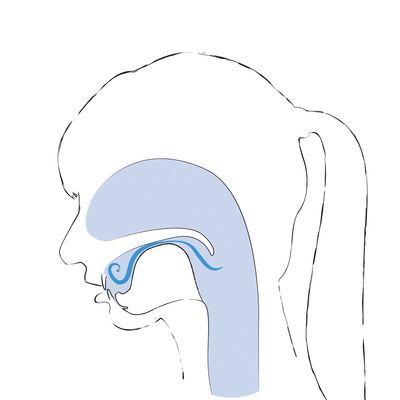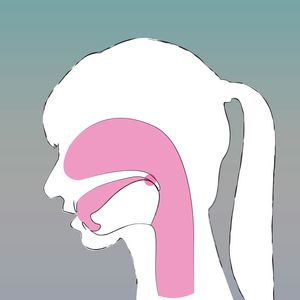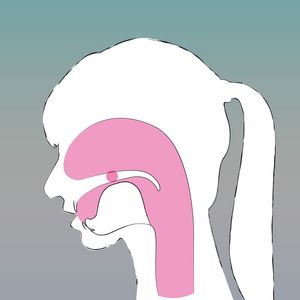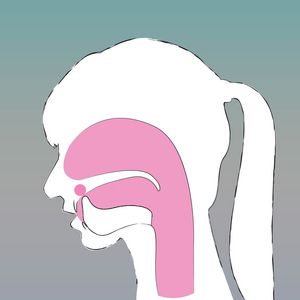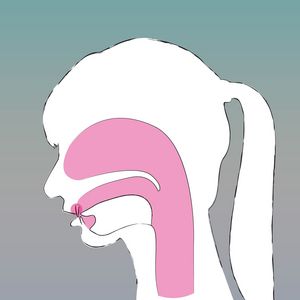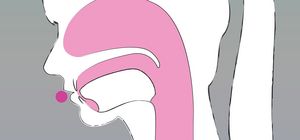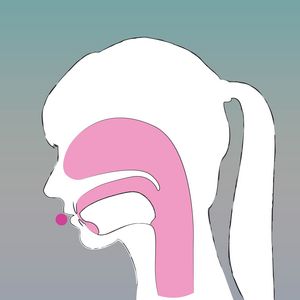The fricative sounds are very close to the semivowels which are produced at the same place of articulation. This may prove helpful when practising the sounds which are unfamiliar and thus difficult for German speakers at first.
- a (vowel) - ga (plosive) - ha (fricative) all three formed guturally (at the throat). There is no guttural plosive in Sanskrit.
- i (vowel) - ya (semivowel) - ja (plosive) - śa (fricative) all four palatal (at the palate)
- r̥ (vowel) - ra (semivowel) - ḍa (plosive) - ṣa (fricative) all four retroflex (with the tongue rolled back)
- l̥ (vowel) - la (semivowel) - da (plosive) - sa (fricative) all four dental (with the tongue at the teeth)
- u (vowel) - va (semivowel) - ba (plosive) - ... there is no fricative for this group in Sanskrit
On the articulation of these sounds, a confined space is produced which swirls the air streaming out and produces a fricative.
Aspirate - the guttural fricative
In linguistics, "aspirate" is the technical term for an unvoiced glottal fricative.
- ha: a guttural fricative (5)
Examples:
In German, the aspirate only occurs as the initial sound of a syllable.
- ha: Harmonie
In Sanskrit, it can also occur within a word or as a final sound. Here, we come closer to the correct pronunciation when we imitate a guttural friction as in the German i-ch.
Palatal fricative
- śa: Here, the air swirls at the palate (palatal). For the articulation of this sound, the teeth should stay closed with the lips noticeably open. The tongue is relaxed and positioned right behind the teeth. The resulting hissing sound thus becomes very sharp, almost as in a German z.
Examples:
- śa: Schale, Schach, Schatten
Pronounced quite hard.
Retroflex fricative
- ṣa: Here, the air swirls behind the teeth (retroflex). For correct pronunciation, the teeth should be open with the tongue rolled behind the teeth. The resulting fricative thus sounds soft and dark.
Examples:
- ṣa: Engl.: wish
Pronounced quite soft.
Dental fricative
- ṣa: Here, the air swirls at the tip of the teeth (dental). For correct pronunciation, the tongue should be placed directly at the tip of teeth. The resulting fricative thus sounds clear and hard.
Examples:
- sa: Muss, Engl: Sunday, summer
An unvoiced s, different from the voiced s common in Northern Germany, for instance in Sonne.
Labial fricative - only a Visarga (ḥ) pronounced as an Upadhmānīya
In Sanskrit, there is no guttural semivowel.
However, in front of unvoiced labial sounds (p or ph), the Visarga (ḥ) is pronounced as a labial fricative. This pronunciation of the Visarga is called Upadhmānīya. The German fh is ph is quite similar to this sound. (Example: Dor-f-Platz).
Examples:
- vṛttayaḥ pañcatayyaḥ (five types of waves) is pronounced as vṛttaya-fh-pañcatayya-hā .
